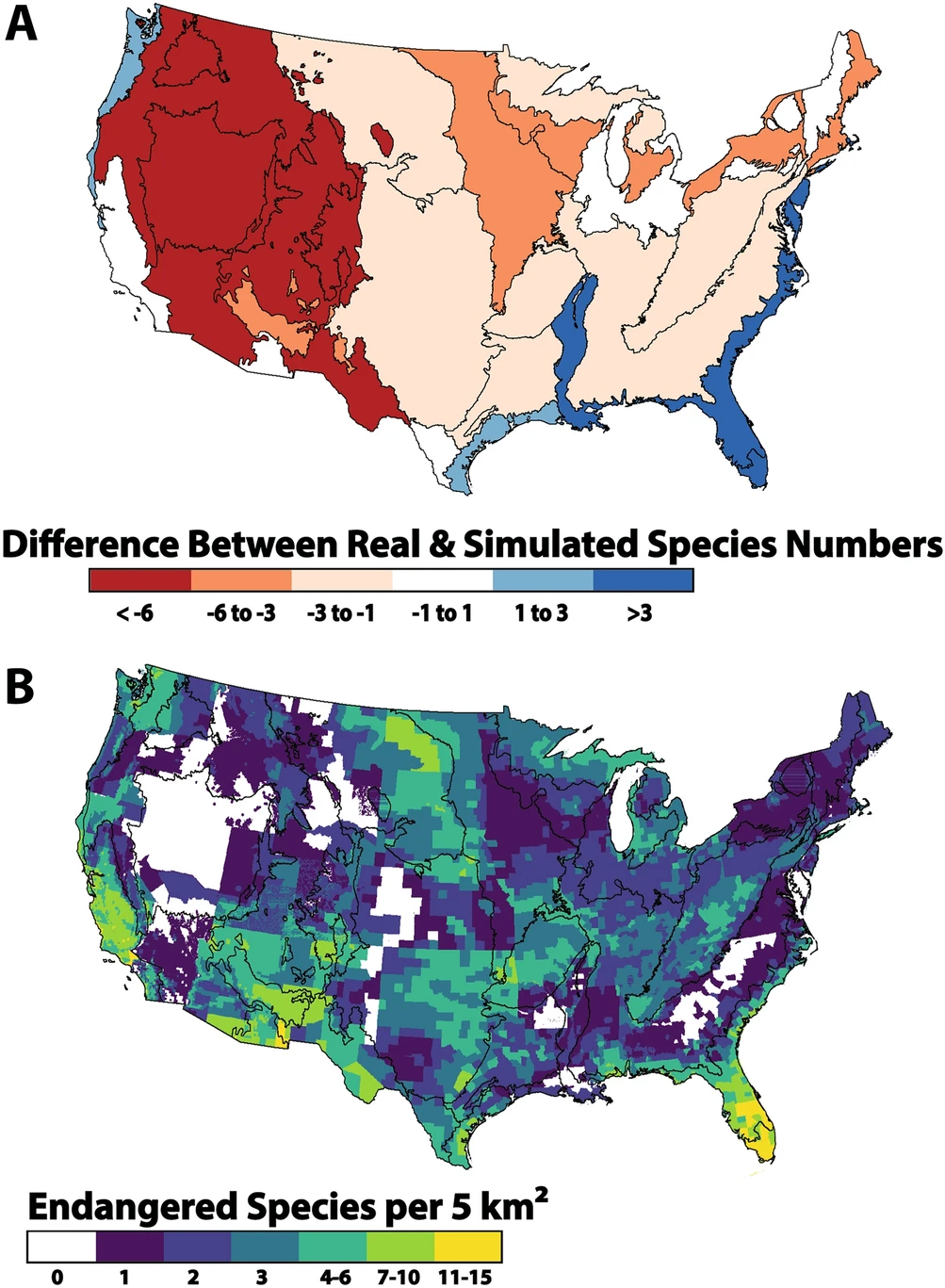
In 1872 the United States created Yellowstone, the first National Park in the world. Since then many more parks, monuments, preserves, wildernesses and other protected areas have been created in the USA. Protected areas, like Yellowstone, are invaluable, but are they actually effective at preserving endangered species? And if not, how can future protected areas do better?
A team of ecologists at Utah State University published a study in Scientific Reports to answer these questions. They used computer models to determine if protected areas in the USA preserve enough land inhabited by endangered species to adequately ensure their future survival in the wild. As it is, the situation is problematic:
Of the 159 endangered mammal, bird, reptile and amphibian species in the continental USA only 21 are adequately preserved by existing protected areas.
Creating new protected areas on public land is fraught with obstacles. Many protected areas are designated based on scenic beauty or lack of agricultural value and these criteria don’t necessarily benefit at-risk species.

Unfavorable political climates can also present problems. Trisha Atwood, Assistant Professor in the Department of Watershed Sciences and Ecology Center, and study co-author explained, “There has been a huge political push in the USA to reduce protected areas such as National Monuments. However, our results suggest that we not only need to increase the spatial coverage of protected areas in the USA, but we also need to ensure that we are protecting the places that contain critical habitat for endangered species.”
Another obstacle is the limited availability of public land. For example, in the state of Texas 95% of the land is privately owned. And according to the study even if all federal and state public lands were given protected area status more than half of the at-risk species in the USA would still be in danger of extinction.
“We are not suggesting that protected areas are doing a bad job,” said Edward Hammill, Assistant Professor in the Department of Watershed Sciences and Ecology Center and study co-author, “what we are suggesting is that there are many opportunities to increase protection.”
One of those opportunities is the creation of conservation easements on private land. Conservation easements are voluntary, legal agreements that restrict future development on private land. In exchange for contributing to conservation efforts, land owners retain their property rights and can receive tax benefits. One of the most important findings from the study is that with the help of private land owners the USA has not lost the capacity to adequately protect 100% of its endangered species.
“It is unlikely that adequate conservation of endangered species will be achieved by increasing federal protected areas,” said Hammill. “Our research highlights that private land owners represent an alternative route to achieving conservation goals.”
Atwood concluded, “These findings give me hope that we can still make a change for the better. But, if we are going to win the fight against extinction we are going to need the help of private land owners.”

